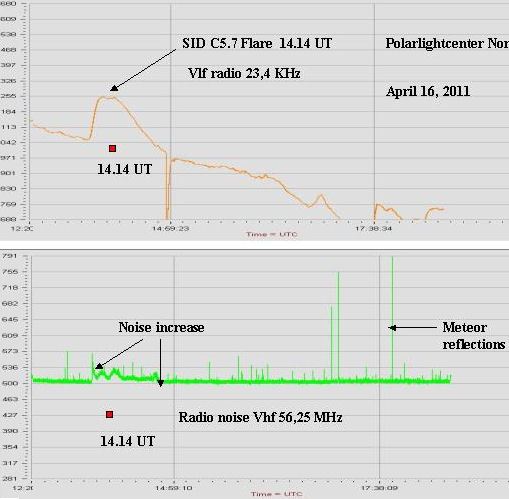What's up in space? SPROUTING GRASS MOON - STRANGE BEAUTY - SUN-EARTH CONNECTION:
SPROUTING GRASS MOON: According to folklore, tonight's full Moon has a special name--the "Sprouting Grass Moon" because it shines down on the new grasses of northern spring. Fun: Go outside after dark and look at the ground. Does the grass look green or blue? The answer may surprise you.
STRANGE BEAUTY: It's been almost a year since NASA's Solar Dynamics Observatory began taking pictures of the sun. As the first anniversary of First Lightapproaches on April 21st, researchers are taking stock of the observatory's many accomplishments. One of the most profound results turns out to be aesthetic: the sun is more beautiful than anyone imagined. Consider the following extreme ultraviolet image, taken just hours ago, of the magnetic canopy of sunspot complex 1191-1193:
This stunning snapshot is actually routine material for SDO. The observatory produces a daily torrent of beauty that, even now, mission scientists haven't grown used to. Normally unflappable researchers are frequently caught staring slack-jawed at SDO movies. And when they're done, they don't have the vocabulary to describe what they have seen. Many of the phenomena SDO catches have no textbook names. SDO's starscapes may turn out to be as prized to poets, artists, and writers as they are to no-nonsense solar physicists. See for yourself.
SUN-EARTH CONNECTION: Even a small solar flare can reach out and touch the Earth. On April 16th, sunspot 1190 produced a relatively minor C5-class flare. X-rays from the distant explosion broke apart molecules in Earth's upper atmosphere, creating a wave of ionization over Europe. Researcher Rob Stammes detected thesudden ionospheric disturbance or "SID" using a very low frequency radio receiver at the Polar Light Center in Lofoten, Norway:
The wave of ionization allowed signals from a terrestrial radio station to bounce over the horizon into Stamme's 23.4 kHz VLF antenna. That's what's shown in the upper panel. Now consider the lower panel: "There was also a small increase in radio noise directly from the flare itself at 56.25 MHz," points out Stammes. "Contact with the sun at VLF and VHF radio frequencies at the same moment gives me important information."
Readers, would you like to be in radio contact with the sun? Visit NASA's RadioJove web site for instructions.
Provided by Space Weather News

